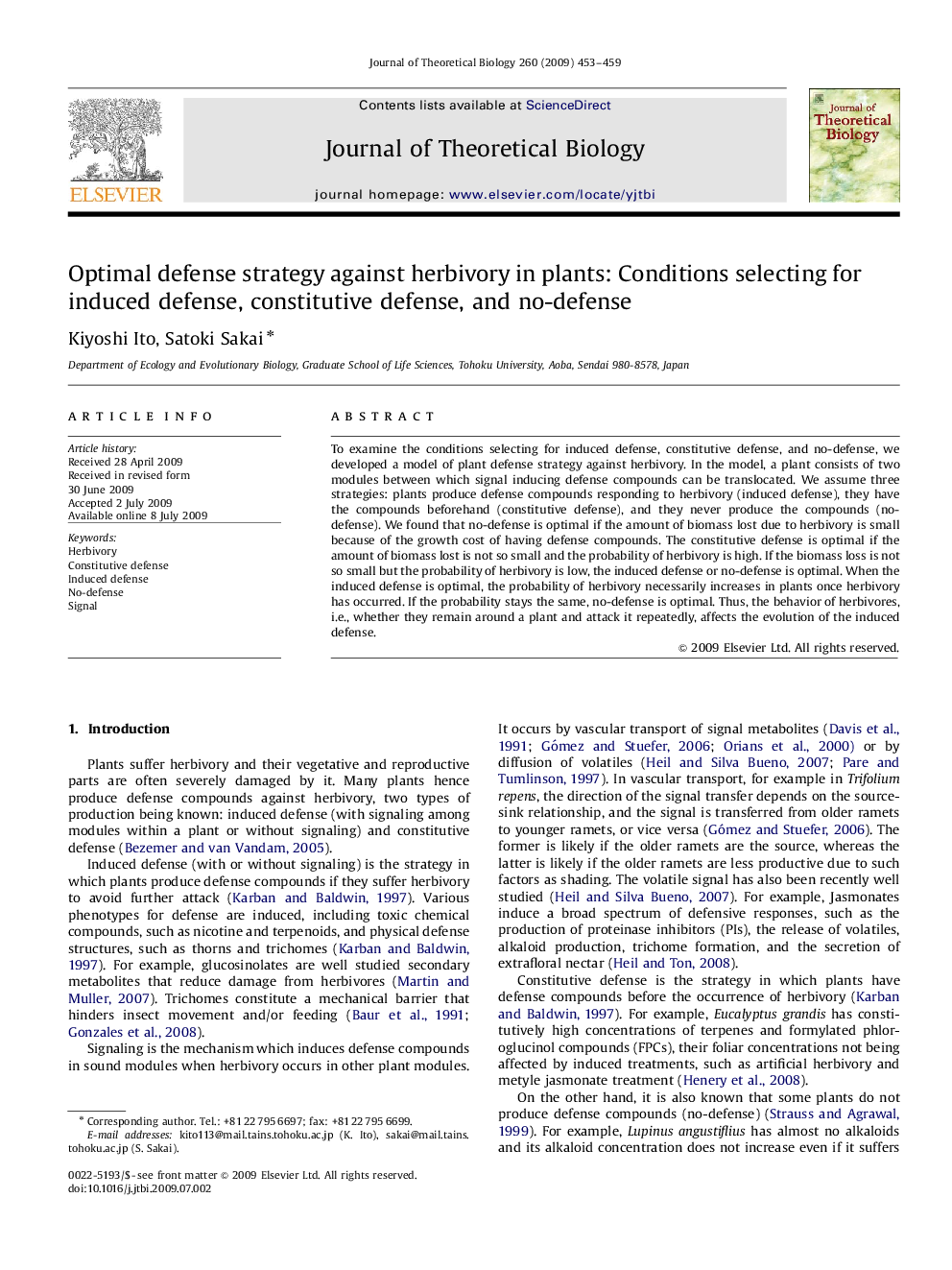| Article ID | Journal | Published Year | Pages | File Type |
|---|---|---|---|---|
| 4497912 | Journal of Theoretical Biology | 2009 | 7 Pages |
To examine the conditions selecting for induced defense, constitutive defense, and no-defense, we developed a model of plant defense strategy against herbivory. In the model, a plant consists of two modules between which signal inducing defense compounds can be translocated. We assume three strategies: plants produce defense compounds responding to herbivory (induced defense), they have the compounds beforehand (constitutive defense), and they never produce the compounds (no-defense). We found that no-defense is optimal if the amount of biomass lost due to herbivory is small because of the growth cost of having defense compounds. The constitutive defense is optimal if the amount of biomass lost is not so small and the probability of herbivory is high. If the biomass loss is not so small but the probability of herbivory is low, the induced defense or no-defense is optimal. When the induced defense is optimal, the probability of herbivory necessarily increases in plants once herbivory has occurred. If the probability stays the same, no-defense is optimal. Thus, the behavior of herbivores, i.e., whether they remain around a plant and attack it repeatedly, affects the evolution of the induced defense.
